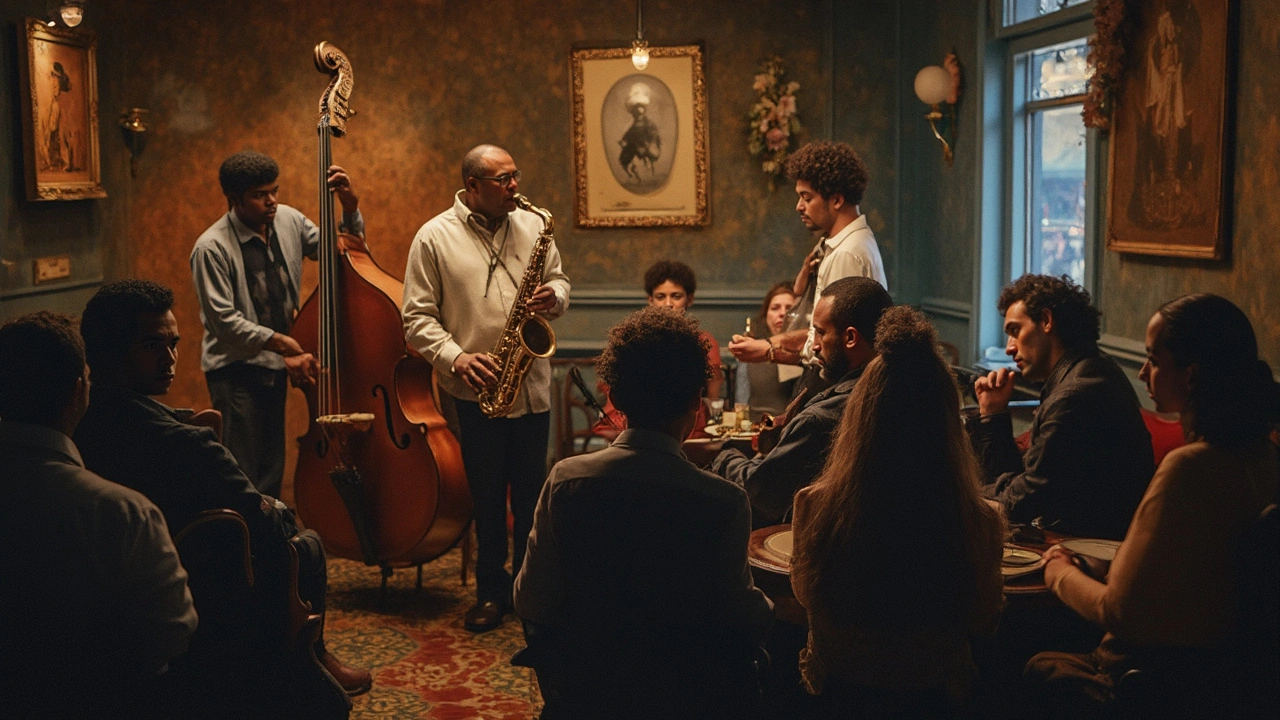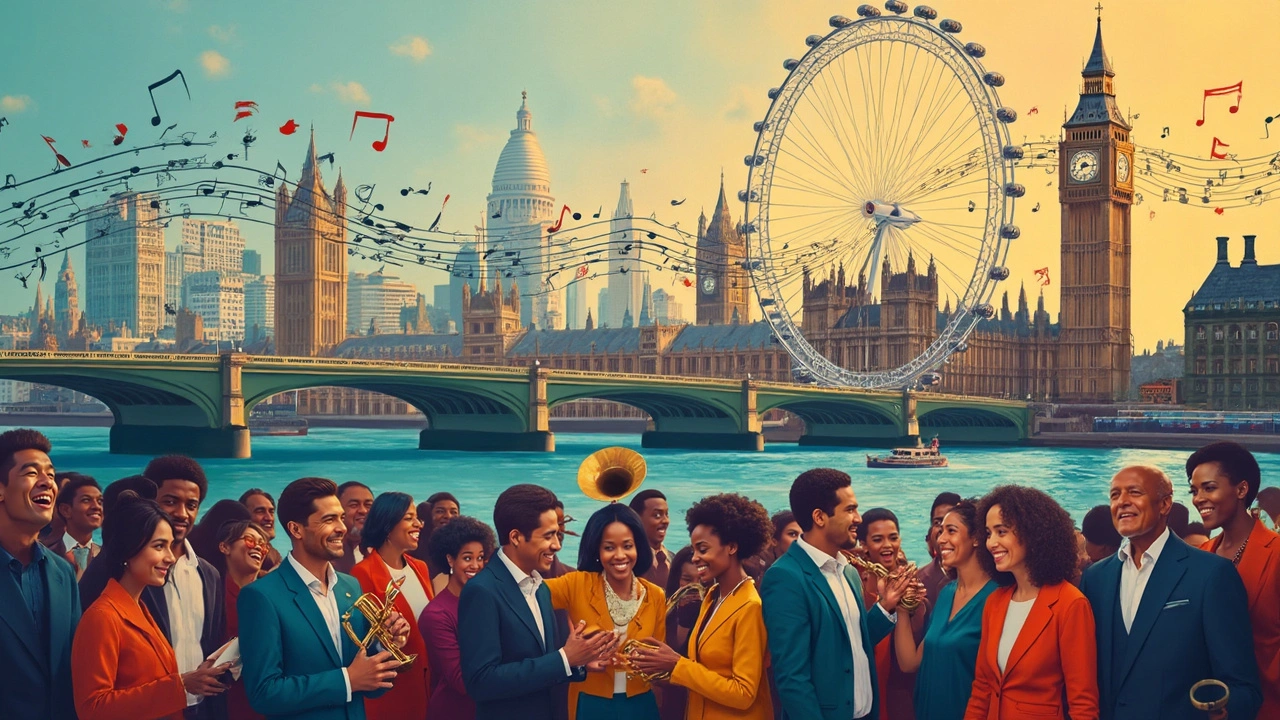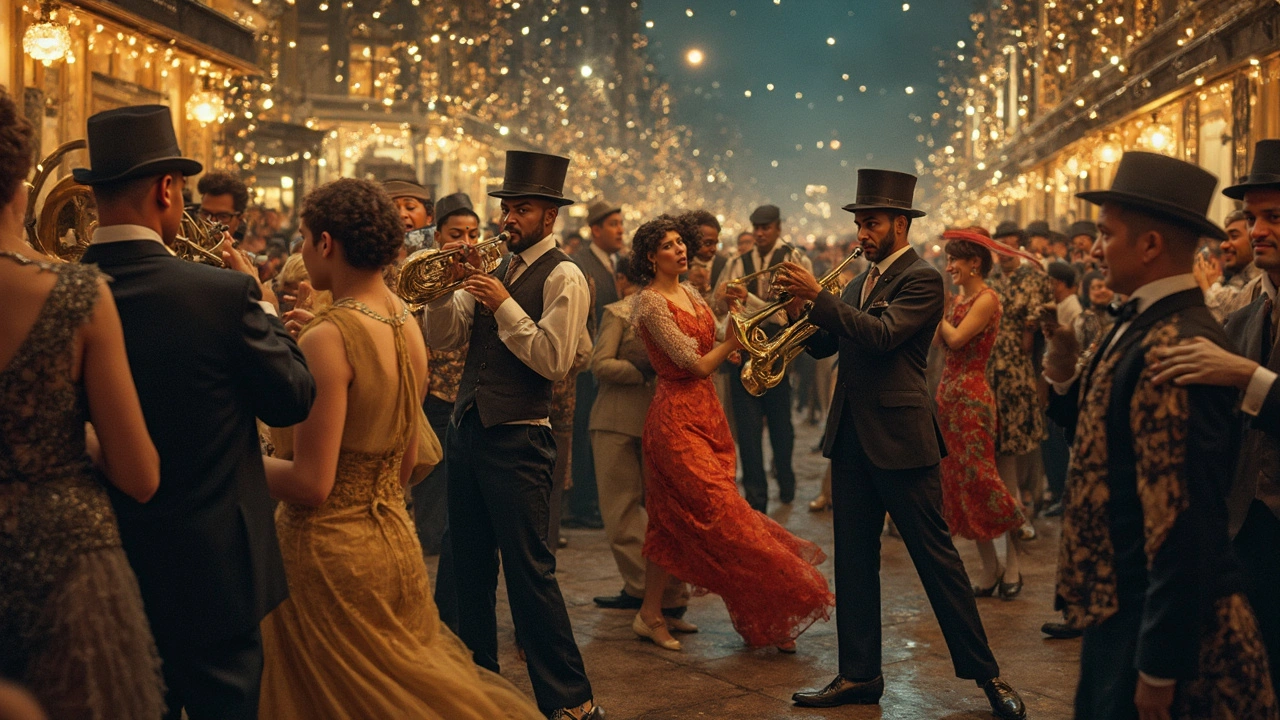Jazz music is like a secret language that transcends borders—not just the physical kind, but the social ones too. How did a genre born from the mix of African rhythms and European harmonies become such a powerful force against racial barriers? Well, jazz started off in New Orleans, a city that was a melting pot of cultures. Here, in the early 20th century, jazz was a vibrant soundtrack to a community that was as diverse as its rhythms.
One of the wildest things about jazz is its roots in African American culture. Despite being born in a time of segregation, it quickly spread across racial lines. You had African American musicians jamming alongside white musicians, breaking societal norms with every beat and riff. This collaboration didn't just create groundbreaking music; it was a statement against the racial divide of the era.
- Jazz: Born from a Melting Pot
- Icons Who Paved the Way
- Moments of Unity in Jazz
- Jazz Festivals: A Cultural Convergence
- The Legacy of Jazz in Today's World
Jazz: Born from a Melting Pot
Jazz music, like a big simmering pot of gumbo, was cooked up in the culturally rich cauldron of New Orleans in the early 1900s. This city was a mixed bag of cultures—French, Spanish, African, and Caribbean influences all mingling together. It was here that jazz found its first breath, born from the fusion of African rhythms and European instruments.
The story of jazz isn't complete without mentioning Congo Square. This was a unique place where enslaved Africans were allowed to gather on Sundays to dance and make music. The syncopated rhythms and call-and-response patterns they brought with them blended seamlessly with the western harmonies they encountered. It was like a jam session between worlds, and the result was something entirely new.
Adding to this mix, the Creole community's classical training introduced intricate melodies, further enriching the genre. Jazz wasn't just a sound; it was a cultural statement. It challenged the rigid racial norms of the time, especially as African American musicians began performing alongside white ones, shaking up the status quo.
Musical Innovation and Cultural Exchange
Instruments like the trumpet, clarinet, and piano became the tools of rebellion and expression. They were wielded by talented musicians who weren't just playing notes but telling stories of resilience and hope. Folks like Louis Armstrong, born in New Orleans, pushed the boundaries of what music could express.
This era of cultural exchange wasn't just a fluke; it set the stage for a wider acceptance and appreciation of music history's power to unite us all. Jazz was stepping across lines, mixing tradition with innovation, and it was loud about it too.
While jazz was shaking things up, it was also drawing people in. Even folks who had never stepped foot in New Orleans could feel the beat and rhythm all across America and, eventually, the world. This melting pot of cultures had cooked up something undeniably powerful and, importantly, unifying.
Icons Who Paved the Way
So, who's responsible for turning jazz music into such a massive movement? Let's talk about some of the legends who used their talent to break racial barriers and make jazz the universal language it is today.
Louis Armstrong: The Trumpet Trailblazer
Laying down the foundation for modern jazz, Louis Armstrong, or "Satchmo" as he's often called, brought people together with his groundbreaking trumpet solos and infectious personality. Born in New Orleans, Louis rose from a tough childhood to become one of music's most influential figures. He was more than just a musician; he was an ambassador for racial harmony. As Armstrong once said,
"If you have to ask what jazz is, you'll never know."His performances alongside white musicians in the racially-segregated America of the 1920s and 30s were more than just shows—they were acts of defiance.
Duke Ellington: The Composer King
Coming from Washington D.C., Duke Ellington became the maestro of a genre still in its infancy. His orchestra was an eclectic mix of musicians from various backgrounds, and his performances at the Cotton Club in Harlem were legendary. By blending classical music and jazz, Ellington showed the world how versatile jazz could be, challenging preconceived racial notions in America at the time.
Ella Fitzgerald: The First Lady of Jazz
With a voice like no other, Ella Fitzgerald shattered racial barriers by becoming the first African American woman to win a Grammy. Dubbed the "First Lady of Song," Ella's collaborations with artists like Frank Sinatra highlighted the power of jazz to bring artists of different races together in harmony. Her story reminds us that talent and passion can overcome even the toughest societal hurdles.
| Artist | Contribution | Born |
|---|---|---|
| Louis Armstrong | Trumpet innovation and racial integration | 1901 |
| Duke Ellington | Orchestrating jazz fusion and bridging classical and jazz genres | 1899 |
| Ella Fitzgerald | Vocalist who broke gender and racial barriers | 1917 |
These icons didn't just shape jazz; they used the music as a tool for social change. By inspiring generations of musicians to create fearless art that knows no racial bounds, they wrote a chapter in history that echoes even today.

Moments of Unity in Jazz
Jazz is more than just rhythm and melody; it’s a living history of cultural blending and breaking down barriers. If we roll back time, there are key moments in jazz history that really stand out as groundbreaking for unity.
The Benny Goodman and Teddy Wilson Collaborations
In the 1930s, Benny Goodman, a white bandleader known as the 'King of Swing,' teamed up with Teddy Wilson, an African American pianist. This wasn’t just a musical project; it defied the era's racial norms. Their collaboration, especially noted during the famous Carnegie Hall concert in 1938, was a bold step toward racial integration in music.
Duke Ellington at the Newport Jazz Festival
Fast forward to 1956, and you've got Duke Ellington reviving his career at the Newport Jazz Festival. This event was a melting pot of performers and audiences, bringing together people from all backgrounds. His performance of "Diminuendo and Crescendo in Blue" became a legendary moment in jazz, showcasing the genre's ability to unite diverse crowds.
The Birth of Bossa Nova
The late 1950s saw another blend with the birth of Bossa Nova, where American jazz met Brazilian samba. This fusion, popularized by musicians like Stan Getz and João Gilberto, was a hit across continents, creating a new universal language in music. This was jazz showing once again it could transcend cultural boundaries.
Jazz festivals, like Montreux and Newport, still carry that tradition. They’ve become gatherings that bring people together from around the globe to celebrate music without borders. These moments have proven time and again that jazz is a true cultural force, capable of overcoming prejudice and uniting us in harmony.
Jazz Festivals: A Cultural Convergence
Jazz festivals are something special. They’re not just about the music; they're crossroads where cultures come together. Imagine a place where people of all backgrounds gather, united by their love for jazz music. These festivals have stood the test of time as vibrant platforms for cultural exchange and mutual respect. They show the true power of music to break down barriers.
One of the most famous is the Montreux Jazz Festival in Switzerland. Since 1967, it has attracted legendary artists like Miles Davis and Etta James. Year after year, musicians from around the world mix with local talent, creating a diverse lineup that reflects jazz's global reach. It's like a global jam session that tears down racial and cultural boundaries.
Across the Atlantic, the Newport Jazz Festival holds a similar legacy. Established in 1954 in Rhode Island, it was groundbreaking as one of the first major festivals in America to openly invite African American artists during a time of racial tension. The festival's role in promoting equality and inclusion is a shining example of the positive impact that music can have on society.
The Social Impact of Jazz Festivals
Jazz festivals do more than entertain. They provide a common ground where conversations start, and friendships form across diverse groups. In many ways, they help in healing wounds of the past and fostering a spirit of unity. Attendees and performers alike leave with new perspectives, making these gatherings invaluable in the cultural landscape.
If you’ve never experienced a jazz festival, think of it as a musical road trip across cultures and styles, each note celebrating the diversity of human expression. They’re proof that jazz music does more than just sound good—it's a force for change, bringing people together when it’s needed most.

The Legacy of Jazz in Today's World
Jazz music might have originated over a century ago, but its impact still resonates loudly in our modern world. It's not just about the music; it's the way jazz has shaped art, culture, and even society. Today's genres like hip hop and R&B owe a lot to the improvisational spirit of jazz, allowing artists to experiment and push boundaries.
Jazz festivals are a big deal nowadays, drawing crowds from all walks of life. Events like the Montreux Jazz Festival or the New Orleans Jazz & Heritage Festival are iconic gatherings where people from around the world come together to celebrate the universal language of jazz. These festivals are a hub for cultural exchange, and they continue to champion the idea that music knows no borders.
Jazz music has also been a unifying force in education. Many schools incorporate jazz studies into their curriculum, exposing students to its rich history and encouraging them to appreciate diverse cultures. It teaches skills like improvisation, which is not just a musical technique but a life skill.
Jazz in Media and Technology
From film scores to video games, jazz's influence is everywhere. Flicks like 'La La Land' have showcased jazz in a modern narrative, introducing it to younger generations. Moreover, jazz clubs in virtual spaces are on the rise, allowing fans to enjoy live performances from their living rooms.
But jazz's digital footprint doesn't end there. Streaming platforms have made jazz more accessible than ever. Artists old and new can share their creations with a global audience, ensuring that its legacy continues to grow.
In a world increasingly divided by political and social lines, jazz music stands as a reminder of what can happen when people from different backgrounds collaborate. Its enduring legacy is proof that music truly has the power to break down barriers and bring people together.

